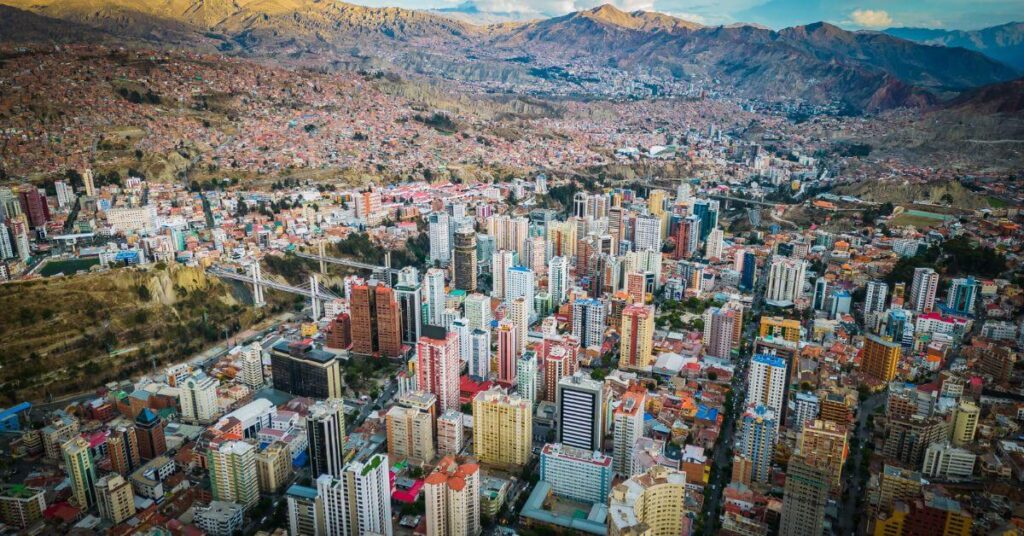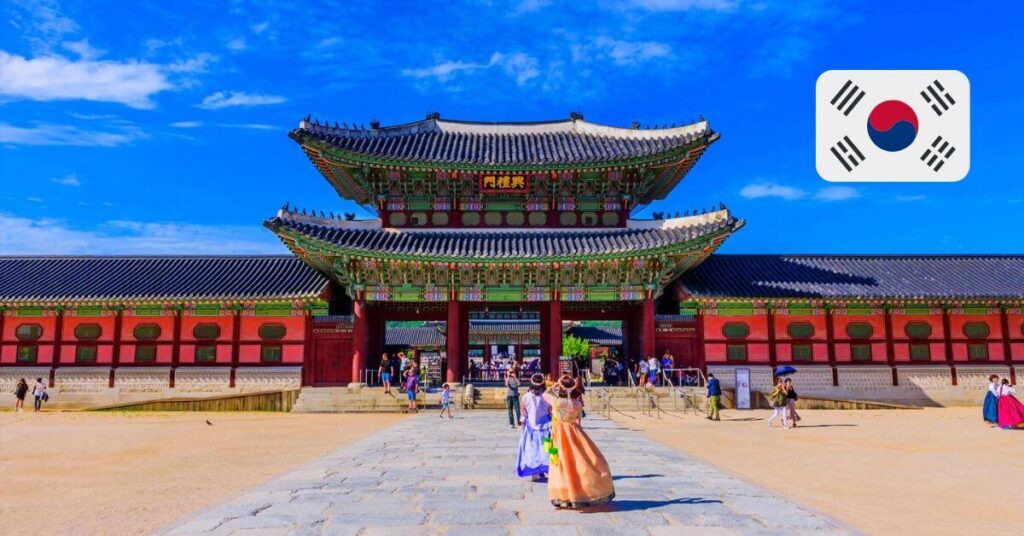Arriving without knowing Best Things to do in La Paz can make the visitor get lost in the chaos of Bolivia’s largest city.
La Paz is one of those cities that attracts and repels tourists for the same reasons. It is a huge city – a metropolis built amidst the altitude of the Andes, where modernity and indigenous traditions meet in each of its corners.
Bolivia, as a poor Latin country, suffers all the social and economic consequences that this combination brings. Thus, it is in La Paz, as it is its largest city, that these contrasts are most evident. And perhaps this is the feature that most intrigues travelers who visit the city. It is in La Paz that you see and understand what Bolivia is.
Best Things to do in La Paz, Bolivia
La Paz is the largest city in Bolivia, but its attractions are concentrated in a small area in the center, easy to get around on foot.
Outside of there, La Paz still allows travelers to use the base city to visit the most diverse attractions in its surroundings. Snow-capped mountains, pre-Inca ruins, the highest lake in the world and even a descent from the Andes to the Yungas forest can be included in the itinerary of anyone exploring what the city has to offer.
To get to know the basics of the city, just moving around the center, two days in La Paz may be enough. For those who want to include trips to more distant places, a four or five day stay will be necessary.
When planning Best Things to do in La Paz, consider that, due to the altitude, the first few days in the city can be lost due to nausea if acclimatization is not done properly. Extra attention should be paid if the itinerary includes attractions that take the visitor to points even higher than the city center, such as Chacaltaya and Huayna Potosí. These should never be visited without making sure you are used to the altitude and should be included in the itinerary, preferably, in the last days of the trip.
Plaza Murillo
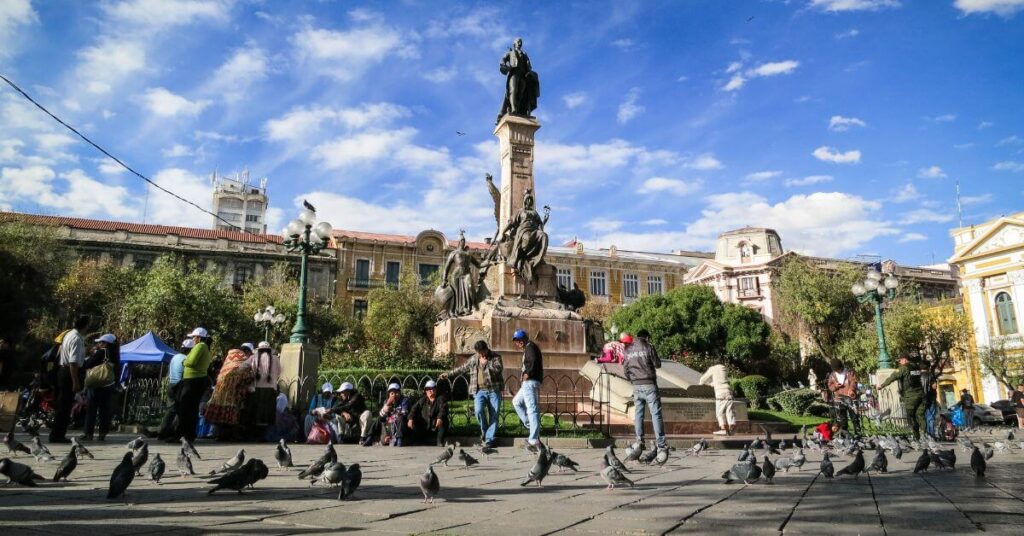
On paper, La Paz is not the capital of Bolivia. The Constitution says that the capital of the country is Sucre. But it is in La Paz that the headquarters of the Executive and Legislative Powers are located, making the city the de facto capital, although unofficially.
Plaza Murillo is where you can best observe the institutional character, reality and political history of La Paz. Surrounding it are the Presidential Palace, the Congress building and the city’s Cathedral.
The square, always full of people (and pigeons) is a great place to start exploring the city, observing its daily life.
Due to the buildings that surround it, the region is heavily policed, as it serves as a location for political demonstrations, which are frequent in Bolivia. Stay tuned.
The Congress building
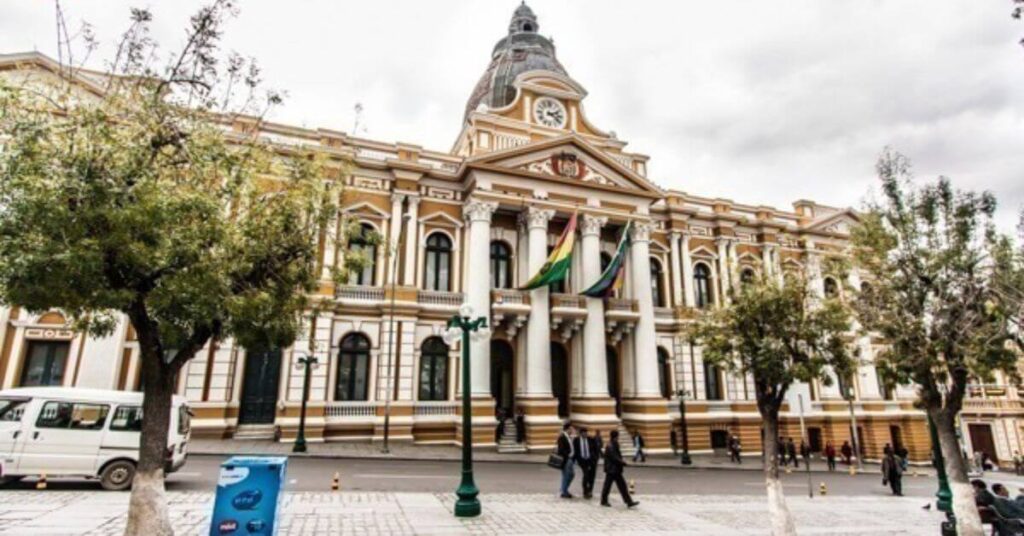
The building that stands out most in Plaza Murillo is the Legislative Palace. The headquarters of the Bolivian parliament operates in a neoclassical building that almost entirely occupies one of the edges of the square.
For us tourists, the Congress is also the most interesting place to visit in the square, as guided tours are allowed inside. The tour makes it clear, through Bolivian political history, how much the country’s current situation is a direct consequence of its political instability. It is also impressive to see how, in a country that is majority indigenous, it was only recently, with the arrival of President Evo Morales to power, that they achieved some political representation.
Government Palace
Next to the Congress Palace, in another neoclassical building, but smaller, there is the Government Palace, popularly called Quemado Palace, where the official residence of the Bolivian President is located. The building is where the La Paz cabildo originally operated, the administrative headquarters built by the Spanish in colonial times.
The name Palácio Quemado dates back to the 19th century when, in one of the country’s revolts, the building was set on fire and later rebuilt.
The cathedral of La Paz
Next to Palácio Quemado is the cathedral of Our Lady of Peace, which gives its name to the city. The church’s architecture follows that of the other buildings and elements in the square, with a clearly visible neoclassical pediment and several Corinthian columns on the facade.
Calle Jaén
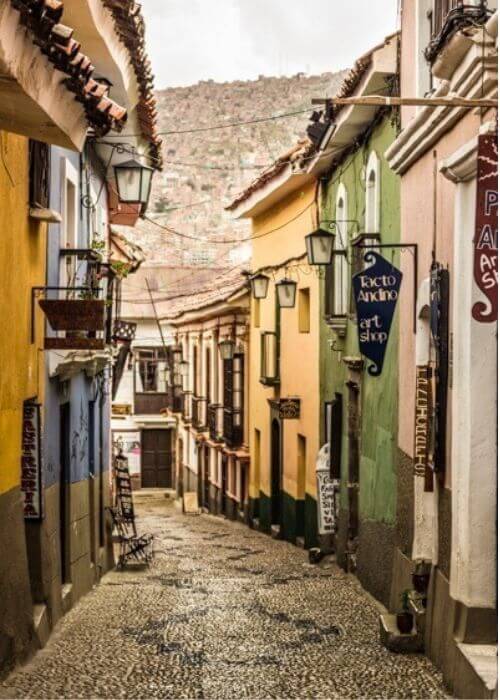
Colonial architecture was not preserved in La Paz as it happened in other Bolivian cities such as Sucre and Potosí (both considered world heritage sites by UNESCO). Today, there are few options for tourists to see a little of what the city was like in times before independence. The best alternative for this is Calle Jaén.
Calle Jaén is a narrow street, closed to pedestrians, with a Portuguese stone floor and colorful houses from the 18th century, side by side, very well preserved. Conservation occurs because two of the martyrs of Bolivian independence historically lived on this street: Pedro Murillo (who gives his name to the city’s main square) and Apolinar Jaén, honored on this street.
Currently, Calle Jaén has small museums in its buildings, such as Precious Stones and Musical Instruments, as well as shops, bars and restaurants, which give the street a distinct character from the rest of the city.
When planning Best Things to do in La Paz, include Calle Jaén on the first day of your trip. The street is a quick walk from Praça Murillo and is a great option for getting used to the city while still getting used to the altitude.
Church and Convent of San Francisco
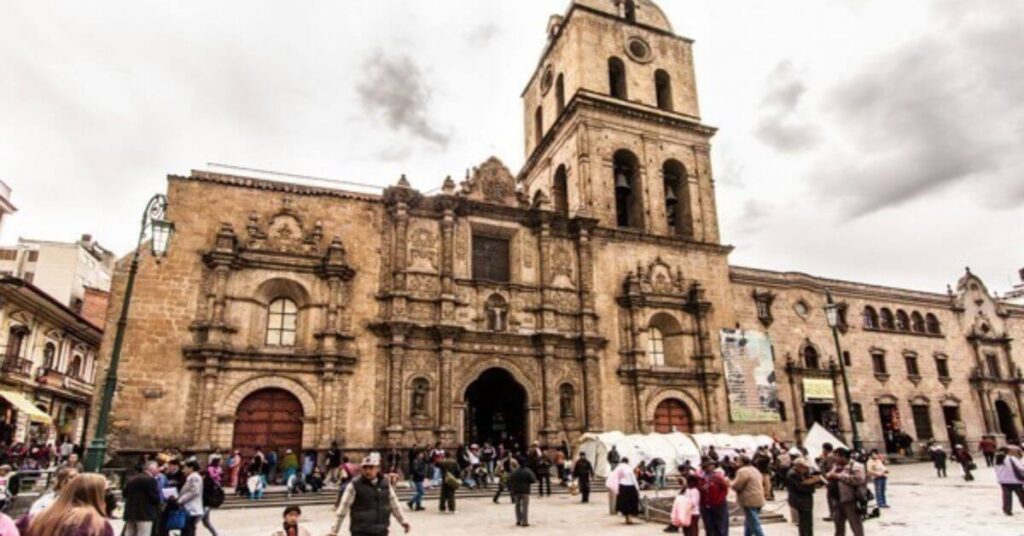
Following the list of attractions from La Paz’s colonial era, the building that stands out most is the Church and Convent of San Francisco.
Located in the square of the same name, next to the center’s main avenue and on the corner of Calle Sagarnaga, the church is the most popular among visitors to La Paz, due to its grandeur and easy access.
Historically La Paz was divided by the Choqueyapu River, which today flows beneath the city center. On one side was the Spanish part of the city, with its regular squares and streets, where Murillo Square is today. On the other, there was the indigenous section, right where the Church and Convent of San Francisco are located.
There has been a church in the place where it stands since the city’s founding, with the current example being erected in the mid-18th century. Made with indigenous labor, its adornments mix European and Andean themes, making it one of the most important built in this style in South America.
Read Also:- Where to stay in Buenos Aires: Best Neighborhoods and Hotel Tips
Calle Sagarnaga
Next to the Church of San Francisco, Calle Sagarnaga is not exactly touristy, but due to its location, it has all the necessary infrastructure to serve visitors well. There are restaurants, currency exchange bureaus, travel agencies and many hotels. When looking for things to do in La Paz, your days will invariably pass along this street.
To be well located, book your hotel nearby to be sure of a good stay. The first few times I was in La Paz I stayed at the Hotel Sagarnaga , which is great, very popular with travelers and can therefore sell out quickly. That’s what happened when we were in the city for the last time and we ended up staying at the Hostal Maya Inn , which is right across the street.
Witches Market
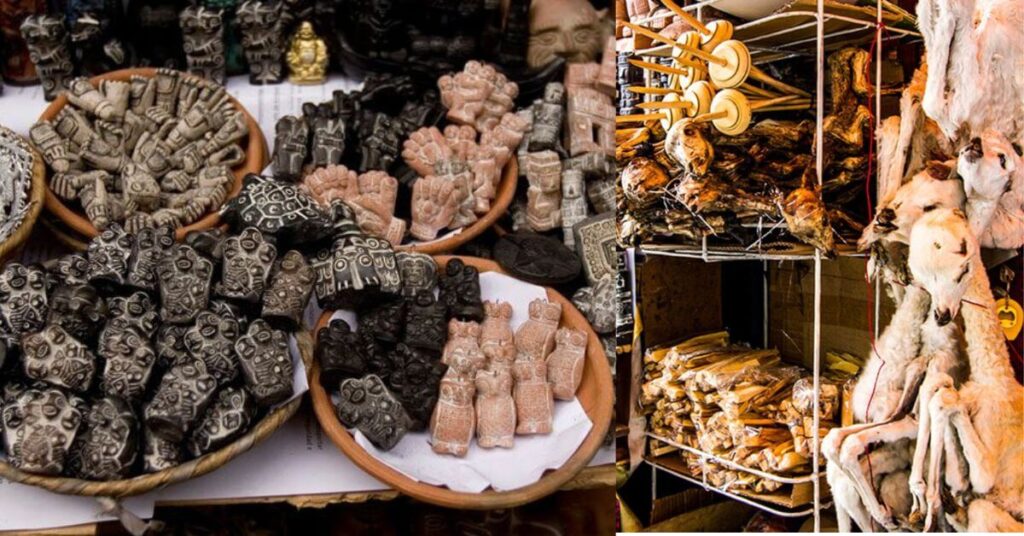
Going up Calle Sagarnaga you soon reach the Mercado das Bruxas, a group of shops that spread across several streets in the center, but concentrated especially on Calle Linares.
In Bolivia, Pachamama is worshiped, an Andean goddess linked to the Earth or the Universe. To please her and have luck in life and business, you need to make offerings to her. Whatever ingredient you need, you will find it at the Witches’ Market.
Over time, the region became a common tourist market, where handicrafts, clothes and the typical trinkets that are bought as travel souvenirs in any city are sold. But what stands out the most, however, and which gives the market its name, are the esoteric products such as potions, medicinal herbs, amulets and all kinds of ingredients for a spell. The most impressive of these are, pay attention, mummified llama fetuses.
According to local tradition, anyone building their home or business needs to bury one of these ferns in their cornerstone to have luck and the protection of Pachamama. According to what they say, the fetuses are aborted naturally by the llamas, as only one of the puppies per litter usually survives, reducing the shock of the situation somewhat.
The viewpoints of La Paz
Located in a valley, La Paz is full of viewpoints from where you can see (and take photos) of the entire city. The closest to the center and most accessible without a car is Killi Killi, which is one kilometer (uphill, of course) from Plaza Murillo. Another nearby option is Laikakota, which is located within a municipal park.
If you don’t want or can’t walk, Uber has been operating in La Paz since 2017, serving as a great option for accessing these more distant parts of the city.
Best Things to do in La Paz: attractions outside the city
La Paz serves as a base for exploring several attractions in the Bolivian highlands that may make the traveler want to extend their stay in the city even further. The best way to do these tours is to hire local agencies that usually have predefined packages, with departures every day for the most popular ones. On Calle Sagarnaga you will find several agencies and you can do a price search among the ones you like the most or offer the best prices.
Read Also:- 15 Common Travel Scams in 2024 (And How To Avoid Them)
Valle de La Luna
Valle de La Luna is an area south of the city full of rock formations sculpted by erosion that make the landscape look like the Moon, giving the attraction its name.
Valle de La Luna is the closest tour to La Paz and the only one that can be done on your own. That’s in theory, because access there is pretty bad. As La Paz agencies usually include a visit to Valle de La Luna in the same tour that takes you to Chacaltaya, it is more worth taking the full tour than trying to get to know the region alone.
Chacaltaya
Chacaltaya is one of the enormous Andean mountains that surround La Paz and the most accessible of them. An open road for vehicles takes visitors very close to the summit, requiring just a short walk as a complement.
At the top of the mountain there is the highest ski resort in the world, but it remains closed due to the recent difficulty in providing conditions for use due to changes in the climate.
Before planning your visit, check with an agency the access conditions to the mountain. During periods of snowfall access may be blocked by snow. In summer, the problem is landslides, common in this region of the Andes.
Huayna Potosí
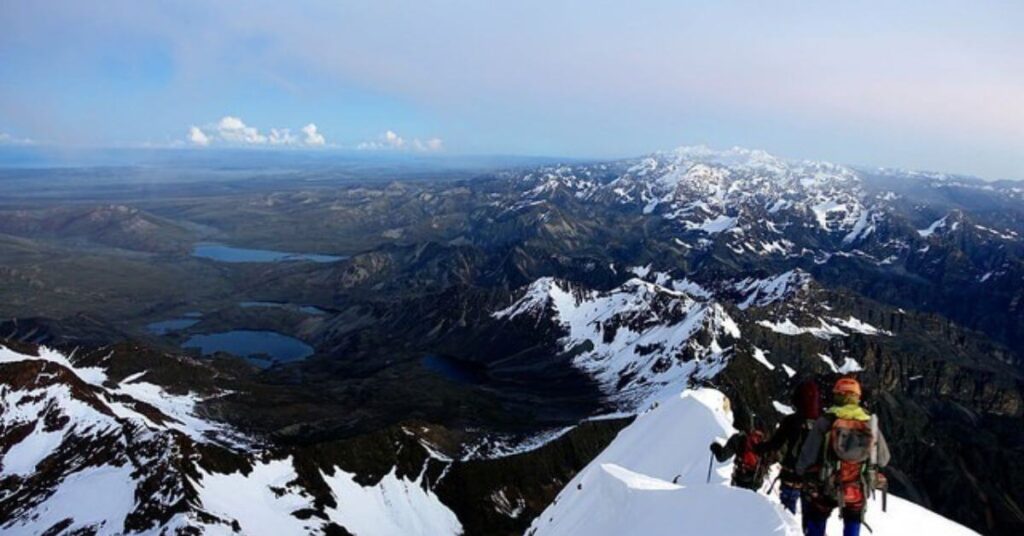
When looking for things to do in La Paz, Huayna Potosí is usually an alternative to Chacaltaya when access to it is closed.
Unlike Chalcataya, here it is only possible to reach the top with professional climbing equipment, but a simple walk can take you to the base of the mountain, which is a really cool experience.
That’s what happened on my first visit to the city. Access to Chacaltaya was closed and I opted for Huayana Potosí. As it was my first time leaving the country and my first time seeing snow, for me it was one of the best trips in the city, but I admit that it may not be as interesting for those who have already had a similar experience in other places.
Tiawanaku
Tiawanaku was a pre-Inca civilization that occupied the Andean highlands since before Christ. The center of this empire operated in a city located near La Paz, on the way between the capital and Lake Titicaca. The archaeological site has a museum and a set of ruins, still partially covered by the land.
To visit Tiawanaku on your own, you must go to the La Paz Cemetery, where buses depart to go to the village close to the ruins. The trip lasts an hour and a half and can be done as a day trip from La Paz.
More practical than that, you can book one of the tours from agencies that visit the ruins on day-long guided tours.
Road to Coroico
The road of death. Or the most dangerous road in the world. With these epithets, the route that connects La Paz to Coroico, in the Yungas of Bolivia, has gained fame and attracts travelers with a more adventurous profile.
The tour offered is a downhill bike ride over the almost 3000 meters of elevation difference between La Paz and the city of Coroico on a road without any protection between the track and the Andean cliffs.
Today, going by car or bus, the route that connects the two cities is along a newer road, opened in 2006. But what attracts tourists is precisely the adrenaline caused by the old road.
There’s no need to say anything you want to do, but you can’t be too careful when booking the tour. Do a lot of research into the company’s history and avoid those that seem too cheap to avoid getting scammed.

